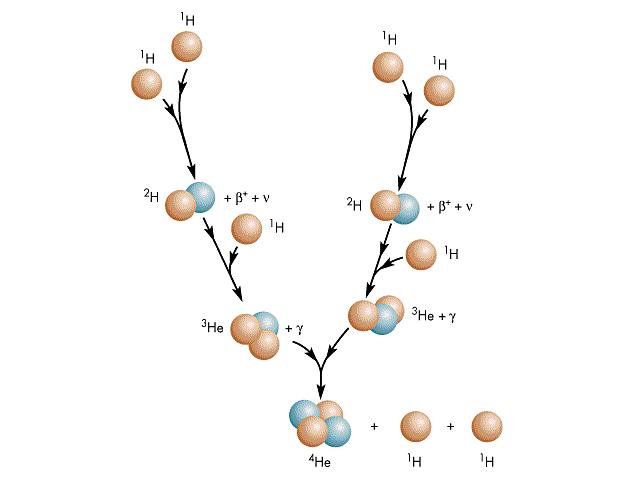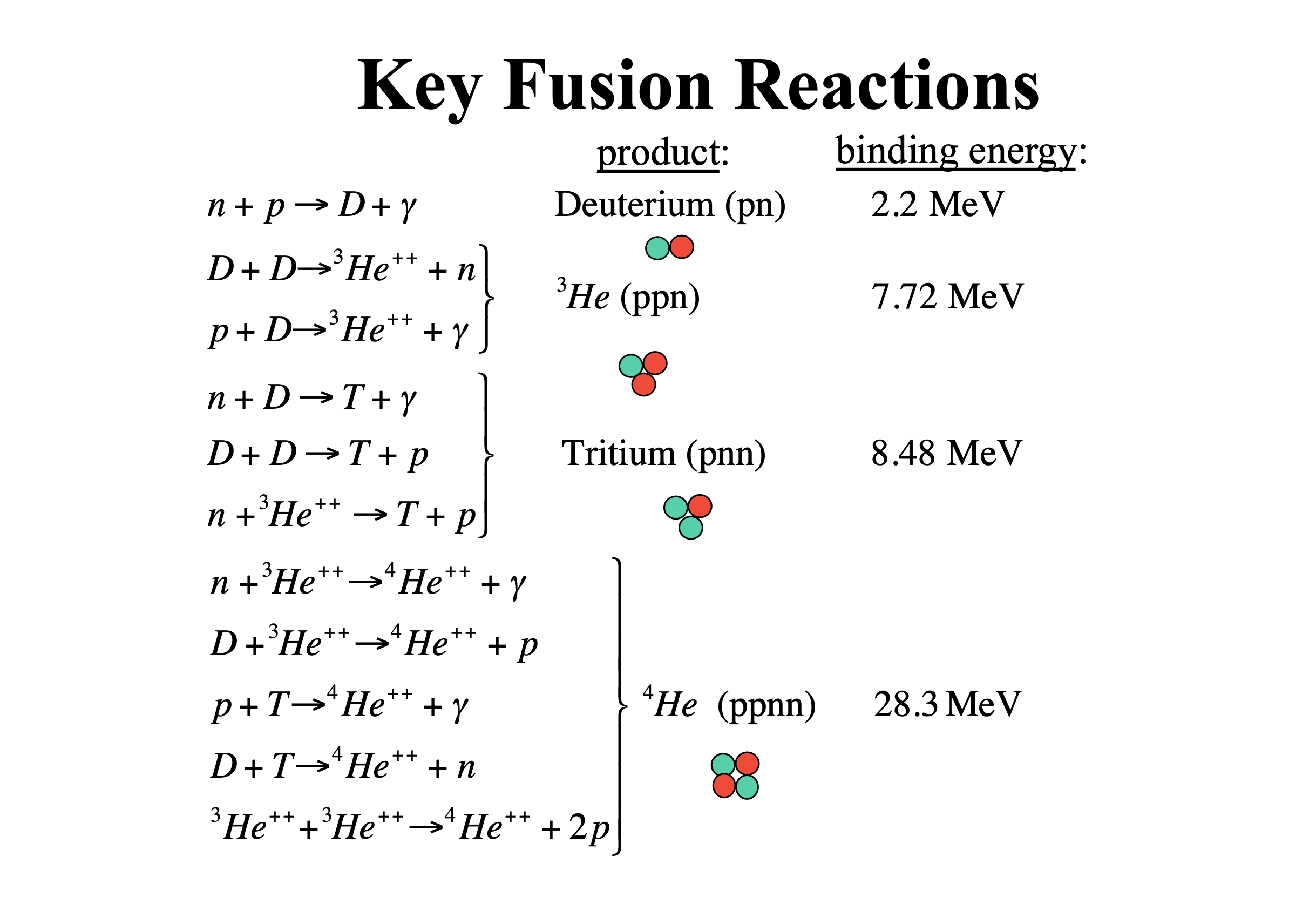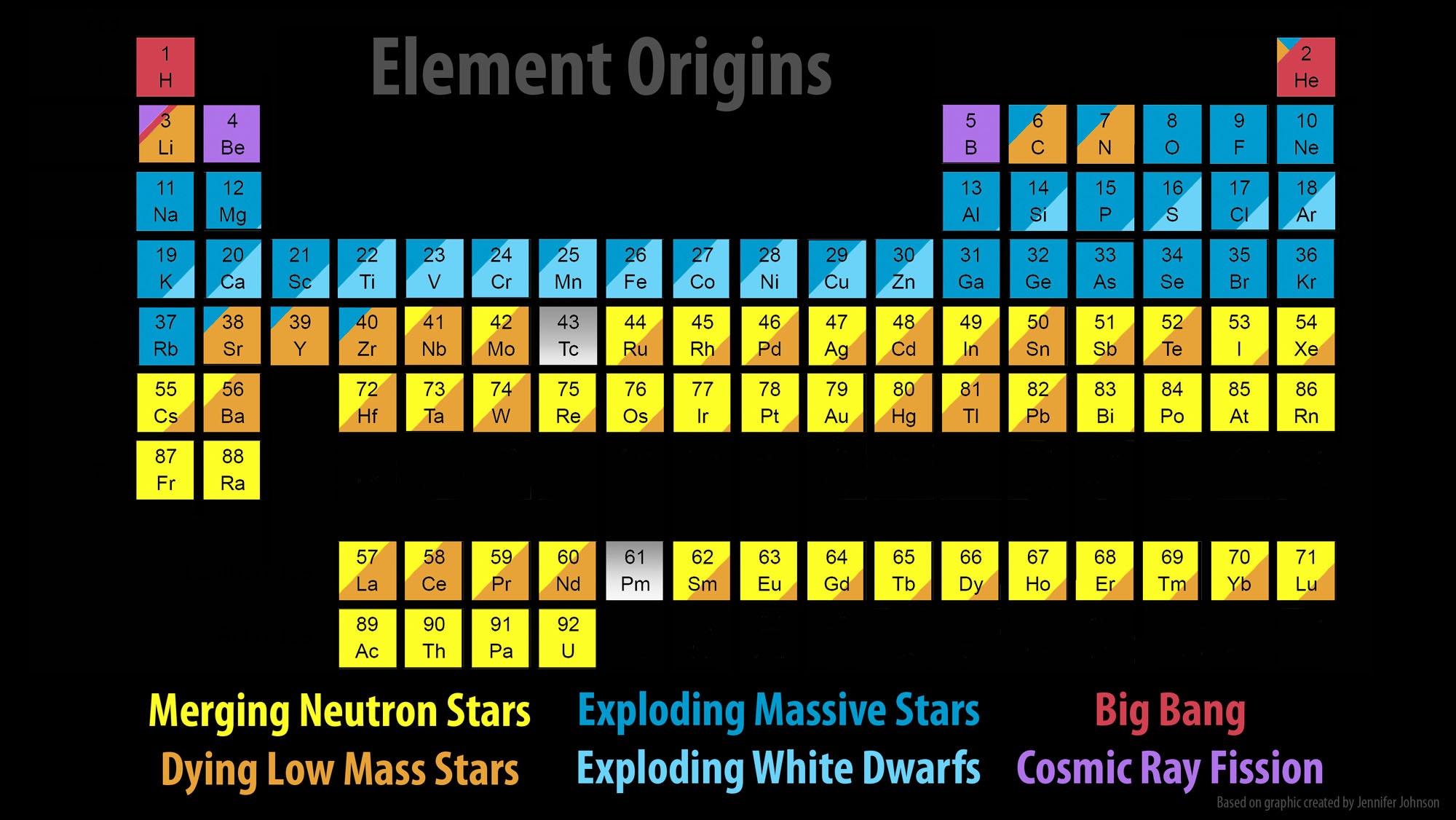Tests of Big Bang Cosmology
http://map.gsfc.nasa.gov/universe/bb_tests.html
The Big Bang Model is supported by a number of important
observations, each of which are described in more detail
on separate pages:
1. The expansion of the universe
http://map.gsfc.nasa.gov/universe/bb_tests_exp.html
Edwin Hubble's 1929 observation that galaxies were generally
receding from us provided the first clue that the Big Bang
theory might be right.
2. The abundance of the light elements H, He, Li
http://map.gsfc.nasa.gov/universe/bb_tests_ele.html
The Big Bang theory predicts that these light elements
should have been fused from protons and neutrons in the
first few minutes after the Big Bang.
In 1948, Physicist George Gamow hypothesized that all of the
elements might have been made in the hot and dense early
universe. He suggested to his student, Ralph Alpher, that he
calculate this. Alpher did so for his PhD thesis, with
Robert Herman participating in much of the work. Alpher and
Herman found that Gamow was wrong: most elements could not
have been made in the early universe.
The problem is with neutron capture. Neutrons decay in about
10 minutes, and their density decreases as the universe
expands in that time. There just isn't enough time to keep
building up to the heavier elements before the neutrons are
gone. The heavy elements are made later, in stars. Only the
lightest elements are built up in the early universe. The
important prediction that the cosmic microwave background
(CMB) exists, and has a blackbody spectrum with a
temperature of about 5 degrees above absolute zero, was a
by-product of this work.
3. The cosmic microwave background (CMB) radiation
http://map.gsfc.nasa.gov/universe/bb_tests_cmb.html
The early universe should have been very hot. The cosmic
microwave background radiation is the remnant heat leftover
from the Big Bang.
These three measurable signatures strongly support the
notion that the universe evolved from a dense, nearly
featureless hot gas, just as the Big Bang model predicts.
Comparison of Solar Nucleosynthesis and Big Bang
Nucleosynthesis
Solar Nucleosynthesis -- proton-proton chain
 Weak Interaction
Weak Interaction
 Relevant papers by John N. Bahcall, Sarbani Basu, M. H. Pinsonneault:
http://xxx.lanl.gov/abs/astro-ph/9805135
http://pdg.lbl.gov/1998/solarnu_s005313.pdf
http://www.slac.stanford.edu/pubs/beamline/24/3/24-3-bahcall.pdf
Big Bang Nucleosynthesis
http://star-www.st-and.ac.uk/~kdh1/ce/ce03.pdf
Relevant papers by John N. Bahcall, Sarbani Basu, M. H. Pinsonneault:
http://xxx.lanl.gov/abs/astro-ph/9805135
http://pdg.lbl.gov/1998/solarnu_s005313.pdf
http://www.slac.stanford.edu/pubs/beamline/24/3/24-3-bahcall.pdf
Big Bang Nucleosynthesis
http://star-www.st-and.ac.uk/~kdh1/ce/ce03.pdf


Fundamental Particle and Interactions
http://www.cpepphysics.org/images/chart_2006_4.jpg
Interactive Periodic Table - With Spectral Lines
http://www.ptable.com
Periodic Table - Sources
 The Evidence For The Big Bang In 10 Little Minutes
http://www.youtube.com/watch?v=uyCkADmNdNo
The Evidence For The Big Bang In 10 Little Minutes
http://www.youtube.com/watch?v=uyCkADmNdNo
Book Recommendation
The First Three Minutes: A Modern View of the Origin of
the Universe
by Steven Weinberg
https://www.amazon.com/First-Three-Minutes-Modern-Universe/dp/0465024378
"The book is the first I have seen to put the details, both
historical and conceptual, of the origin of the Universe
within the grasp of the general reader... As such, it is a
tremendous service to us all."
~Isaac Asimov
"His book is science writing at its best."
~Martin Gardner, New York Review of Books
"Weinberg builds such a convincing case...that one comes
away from his book feeling not only that the idea of an
original cosmic explosion is not crazy but that any other
theory appears scientifically irrational."
~Jeremy Bernstein, New Yorker
"A most remarkable achievement...presented with
clarity...and great scientific accuracy."
~T.D. Lee, Nobel Laureate in Physics
sam.wormley@icloud.com
Weak Interaction
Relevant papers by John N. Bahcall, Sarbani Basu, M. H. Pinsonneault: http://xxx.lanl.gov/abs/astro-ph/9805135 http://pdg.lbl.gov/1998/solarnu_s005313.pdf http://www.slac.stanford.edu/pubs/beamline/24/3/24-3-bahcall.pdf Big Bang Nucleosynthesis http://star-www.st-and.ac.uk/~kdh1/ce/ce03.pdf


The Evidence For The Big Bang In 10 Little Minutes http://www.youtube.com/watch?v=uyCkADmNdNo